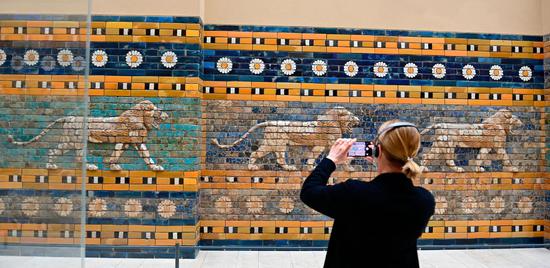
Construction seen as very challenging due to climate, geological conditions
Two sections of the railway connecting Sichuan province and the Tibet autonomous region will start construction by the end of this month, the national railway operator said on Saturday.
Public bidding was recently completed on the sections linking Ya'an and Xinduqiao in Sichuan, and Bomi and Nyingchi in Tibet. Seven bidders beat out 30 others to secure work on the projects, China State Railway Group said.
The Sichuan section will be 186 kilometers long, and the one in Tibet 151 km.
In November, President Xi Jinping said work on the Sichuan-Tibet railway is proving extremely challenging due to complex geological and climate conditions, as well as the sensitive environment in the regions.
To support the construction effort, the railway group has led research in areas such as geological disaster prevention and control, as well as tunnel and bridge design and construction.
The group said preparatory work is underway for construction of the line between Xinduqiao and Bomi-including the establishment of roads and electrical systems and the implementation of environmental protection measures. The section is expected to be ready for construction to start in the fourth quarter of the year.
The 1,838-km Sichuan-Tibet railway is divided into three parts.
The Chengdu-Ya'an section opened in December 2018. Construction on the Lhasa-Nyingchi section started in 2015, and the section is expected to open this year. For the third part between Ya'an and Nyingchi-the most challenging section in the middle of the railway-construction projects, including work on tunnels and a bridge, began in November, before the recent public bidding.
With a designed speed of 120 to 200 km per hour, the 1,011-km Ya'an-Nyingchi section passes through the Sichuan Basin, the Yunnan-Guizhou Plateau and the Qinghai-Tibet Plateau, climbing from 600 meters above sea level to nearly 4,500 meters.
The Ya'an-Xinduqiao and Bomi-Nyingchi sections are part of the middle section of the line.
Upon completion, the railway will be the second to link Tibet with the rest of the country, following the Qinghai-Tibet Railway, which opened in 2006.
Lu Chunfang, an academician of the Chinese Academy of Engineering and the general director of the Qinghai-Tibet Railway, echoed Xi's remarks about the building effort in a recent interview, saying it is the "most challenging railway construction project in human history "because of the complicated geological conditions.
More than 90 percent of the line consists of bridges or tunnels, he said.
The date of the railway's planned completion has yet to be revealed.


















































